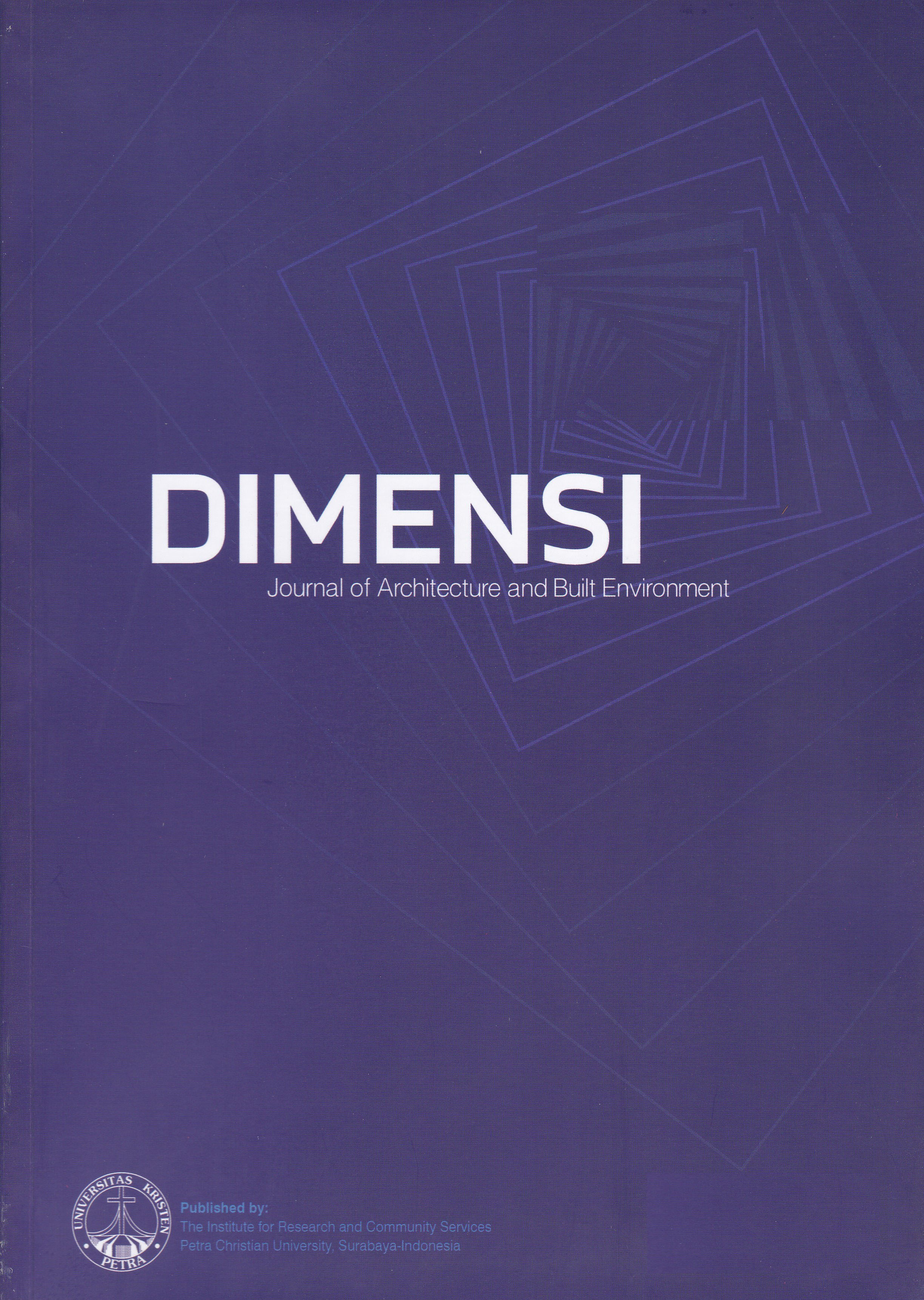DECONSTRUCTION CONCEPT DESIGN OF EXHIBITION CENTER IN DEPOK CITY WITH DISJUNCTION INTERPRETATION
DOI:
https://doi.org/10.9744/dimensi.49.2.123-132Keywords:
Research by design, deconstruction concept, disjunctionAbstract
Contemporary urban condition always evoke a series of impressive artistic architectural responses with an understanding that is no longer interested in unity, but also accepts the fragmentation of certain elements. When considering contemporary problem-solving efforts with design-based responses, it will also link design with research to find out solutions. This research focuses on conveying critical reflections on how to interpret the deconstruction concept design of Exhibition Center in Depok City by questioning the new design definition based on research by design. The understanding of the deconstruction concept uses Bernard Tschumi's disjunction theory as a methodological process based on the visualization exploration. Disjunction interpretation helped to define the new Exhibition Center design in Depok City as urban generator. It is hoped that this research would be beneficial in guiding to considering the "built language" of design as an act of research that are open to possibilities based on thought and experience.
Downloads
References
Ardianta, D.A. (2009). Penerapan Disjunctive Architecture dalam Perancangan Ruang Publik Jawa. Thesis. Bandung.
Brown, A. (2014). Parc de la Villette: The Complexity of Human Experience. Retrieved from https://www.academia.edu/9154822/Adam_Brown_Final_Essay_Parc_de_la_Villette
Costanzo, M. (2009). Twenty Years After (Deconstructivism): An Interview with Bernard Tschumi. Architectural Design, 79, 24–29.
Dharma, A. (2004). Paradigma Konseptual Arsitektur Dekonstruksi. Retrieved from http://staffsite.gunadarma.ac.id/agus_dh/
Ebert, C. (2003). The Dilemma with Disjunction: Architecture and Discourse in Bernard Tschumi’s Early Work. Thesis. Scientific Journal of The Bauhaus-Universität Weimar.
Khan, A. (2016). The Promenade in Architecture. Retrieved from https://issuu.com/ayazk/docs/the_promenade_in_architecture.
Lawson, F. (1981). Convention and Exhibition Facilities. The Architectural Press Ltd. London.
Lestari, N.R., et all. (2016). Montage as Spatial Reconstruction Operation Method in Designing Cinematic Architecture. MODUL, 21(2), 146.
Mantiri, H. J., & Makainas, I. (2011). Eksplorasi Terhadap Arsitektur Dekonstruksi. Media Matrasain Journal, 8(20), 69-72.
Mubarrok, N.Z. (2016). Perancangan City Hotel dengan Makna Batik Kawung sebagai Referensi Desain. Thesis. Surabaya.
Mulyadi, L., & Darsopuspito, S. (2011). Dekonstruksi Sebagai Metode Merancang Dalam Arsitektur. Sondir Journal, 5(9), 1-14.
Nesbitt, B. (1996). Theorizing a New Agenda for Architecture: An Anthology of Architectural Theory 1965 – 1995. Princeton Architectural Press. New York.
Roggema, R. (2016). Research by Design: Proposition for a Methodological Approach. Urban Science 1(1), 2.
Roihanah, I. (2015). Derrida dan Proses Kreatif Bernard Tschumi. Retrieved from https://www.academia.edu/18789875/Derrida_dan_proses_kreatif_bernard_tschumi.
Schoonderbeek, M. (2017). A Theory of “Design by Research”; Mapping Experimentation in Architecture and Architectural Design. Ardeth 1(1), 63-79.
Sutanto, A. (2020). Peta Metode Desain. e-book. Jakarta.
Sutanto, A. (2021). Research by Design. e-book. Jakarta.
Tschumi, B. (1994). Manhattan Manuscript. MIT Press. Cambridge.
Tschumi, B. (1996). Architecture and Disjunction. MIT Press. Cambridge.
Tschumi, B. (2015). Six Concept: Excerpt from Architecture and Disjunction. Retrieved from http://workgroups.clemson.edu/, 5-6.
Downloads
Published
How to Cite
Issue
Section
License
Authors who publish with this journal agree to the following terms:
- Authors retain copyright and grant the journal right of first publication with the work simultaneously licensed under a Creative Commons Attribution License that allows others to share the work with an acknowledgement of the work's authorship and initial publication in this journal.
- Authors are able to enter into separate, additional contractual arrangements for the non-exclusive distribution of the journal's published version of the work (e.g., post it to an institutional repository or publish it in a book), with an acknowledgement of its initial publication in this journal.
- Authors are permitted and encouraged to post their work online (e.g., in institutional repositories or on their website) prior to and during the submission process, as it can lead to productive exchanges, as well as earlier and greater citation of published work (See The Effect of Open Access).



















